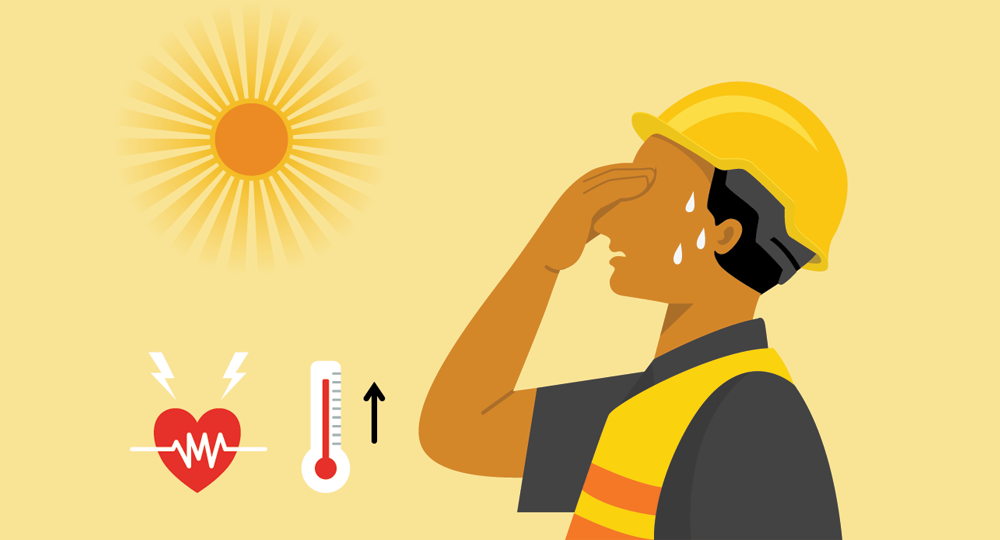Heat Awareness Tips
Heat awareness at work is crucial to ensure the safety and well-being of employees, particularly in industries or work environments where heat stress is a concern. Here are some key points to consider regarding heat awareness at work:
Recognize the signs of heat-related illnesses: Educate employees about the signs and symptoms of heat exhaustion and heat stroke. These can include dizziness, headache, nausea, rapid heartbeat, confusion, and in severe cases, loss of consciousness. Encourage employees to report any symptoms they experience.
Provide training and education: Conduct regular training sessions to raise awareness about heat-related hazards, prevention strategies, and first aid procedures. Train employees to recognize the signs of heat stress and know how to respond appropriately.
Establish a heat stress policy: Develop a comprehensive heat stress policy that outlines procedures for working in hot environments. Include guidelines for breaks, hydration, and protective measures, such as appropriate clothing and personal protective equipment (PPE).
Encourage hydration: Promote a culture of hydration by providing access to cool water and encouraging employees to drink fluids regularly, even if they don't feel thirsty. Encourage the consumption of electrolyte-rich drinks to replenish minerals lost through sweating.
Modify work schedules: Whenever possible, adjust work schedules to avoid the hottest parts of the day. Consider implementing flexible working hours, staggered shifts, or rescheduling physically demanding tasks to cooler times.
Provide rest breaks: Allow regular breaks in shaded or air-conditioned areas to give employees time to cool down and recover from heat exposure. Monitor work-rest cycles and ensure that employees have sufficient time to rest and rehydrate.
Modify the work environment: Take steps to reduce heat exposure, such as improving ventilation, providing fans or air conditioning, and using reflective barriers to shield workers from direct sunlight. Consider implementing engineering controls, such as insulation or reflective coatings, to minimize heat absorption.
Personal protective equipment (PPE): Evaluate the need for specialized heat-resistant PPE, such as heat-reflective clothing or cooling vests, to provide additional protection for employees working in extreme heat conditions.
Encourage self-monitoring: Encourage employees to monitor their own well-being and that of their co-workers. Foster an environment where individuals feel comfortable speaking up if they notice signs of heat stress in themselves or others.
Regular review and improvement: Continuously evaluate the effectiveness of heat management measures and make necessary adjustments based on feedback, incident reports, and changing weather conditions. Regularly review and update heat stress policies and procedures as needed.
Remember, every workplace is unique, and heat management strategies should be tailored to specific job requirements and environmental conditions. By promoting heat awareness, providing training, and implementing appropriate control measures, you can help create a safer and healthier work environment for your employees.

